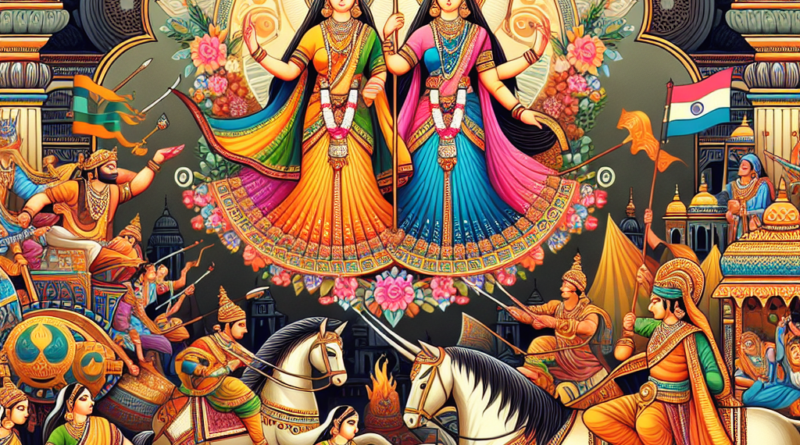The Vibrant History and Traditions of Navratri
Title: The Story Behind Navratri Festival: Hindu and Indian Cultural Significance
Navratri, meaning “nine nights” in Sanskrit, is one of the most vibrant and widely celebrated festivals in Hindu culture. This auspicious festival is dedicated to the worship of Goddess Durga and her various forms over a period of nine days. Navratri holds immense cultural and historical significance in India, symbolizing the triumph of good over evil and the celebration of feminine power.
Historical Context:
The origins of Navratri can be traced back to ancient Indian scriptures and mythology. According to Hindu mythology, the festival celebrates the victory of Goddess Durga over the buffalo demon, Mahishasura. It is believed that Mahishasura, with his immense power and strength, had wreaked havoc on the world and the Gods were unable to defeat him. In response, they created Goddess Durga, a fierce and powerful warrior, to vanquish the demon and restore peace and order to the universe.
The battle between Goddess Durga and Mahishasura raged on for nine days and nights, culminating in the victory of the goddess on the tenth day, which is celebrated as Vijayadashami or Dussehra. This epic battle symbolizes the triumph of good over evil, light over darkness, and the ultimate victory of righteousness.
Cultural Significance:
Navratri is celebrated with great fervor and enthusiasm across India, with each region having its unique customs and traditions. In Gujarat, the festival is marked by vibrant Garba and Dandiya Raas dances, where men and women come together in colorful traditional attire to perform intricate dance movements in honor of Goddess Durga. In West Bengal, Navratri is celebrated as Durga Puja, with elaborate pandals (temporary structures) set up to house beautifully crafted idols of the goddess.
The festival is also a time for fasting, prayer, and introspection, as devotees seek blessings from Goddess Durga for health, prosperity, and happiness. Each of the nine days of Navratri is dedicated to a different form of the goddess, known as Navadurga, and devotees offer prayers, perform rituals, and participate in spiritual activities to invoke her divine blessings.
Contemporary Relevance:
In modern times, Navratri continues to hold great significance in Indian culture and society. The festival serves as a reminder of the importance of faith, devotion, and the power of good deeds. It brings communities together, fostering a sense of unity and solidarity as people come together to celebrate and worship the divine feminine energy.
Navratri also plays a significant role in promoting traditional Indian arts and culture, with dance performances, music concerts, and cultural events being organized across the country during the festival. It provides a platform for artists and performers to showcase their talent and creativity, keeping alive the rich heritage and traditions of India.
Furthermore, Navratri serves as a time for reflection and spiritual growth, allowing individuals to connect with their inner selves and seek spiritual enlightenment. The festival encourages people to let go of negativity, embrace positivity, and strive for personal growth and self-improvement.
In conclusion, Navratri is not just a religious festival but a celebration of Indian culture, heritage, and values. It embodies the essence of Hindu mythology, symbolizing the eternal battle between good and evil, and the victory of righteousness. Through its rituals, traditions, and customs, Navratri continues to inspire and uplift people, reminding them of the power of faith, devotion, and the divine feminine energy that resides within us all.

